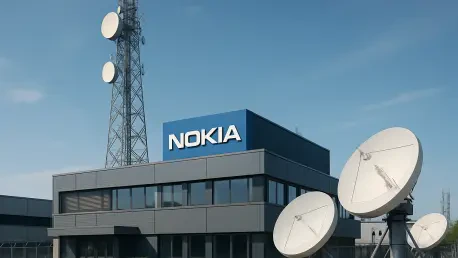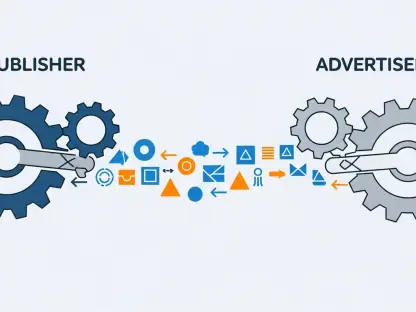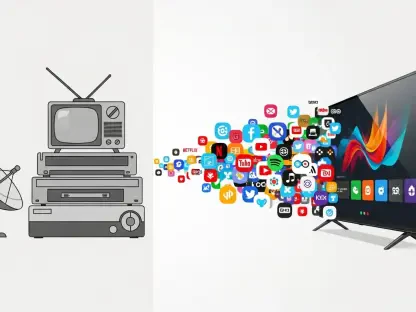The dramatic shift toward cloud integration within the telecom industry is highlighted by Nokia’s innovative step to introduce its Quality of Service (QoS) on Demand, Number Verification, and Device Location Verification APIs to the Google Cloud Marketplace. This initiative represents a paradigm shift, melding telecom infrastructure with cloud capabilities in an unprecedented manner. By fostering this integration, Nokia is not merely enhancing its service offerings but also setting a progressive benchmark for telecom operators aiming to leverage cloud-based solutions to augment and monetize their operations. This collaboration ventures beyond traditional telecom boundaries, opening up avenues for technological advancement and business growth in an evolving digital economy.
The Convergence of Telecom and Cloud Technologies
Breaking Traditional Silos
Nokia’s strategic engagement with Google Cloud marks a transformative moment in telecom history, breaking down long-standing silos traditionally associated with voice and data-centric services. By democratizing network intelligence through open-standard APIs, Nokia invites developers from across the globe to innovate and enhance industry solutions, thus expanding its ecosystem and customer base significantly. These open APIs allow third-party developers to utilize Nokia’s powerful network capabilities, facilitating a more interoperable and enriched environment that fosters innovation. This collaboration indicates a gradual transition toward a more integrated network landscape, unshackling the industry from the constraints of dedicated telecommunications infrastructure.
The significance of this move is magnified by its promise to deliver enhanced service quality and consumer experiences. Through APIs like Quality of Service on Demand, businesses can now ensure reliable bandwidth and minimize latency issues for mission-critical applications, empowering them to deliver superior digital experiences. This democratization is not merely technical but also business-enabling, presenting opportunities for new service models and revenue streams and reducing dependency on bespoke infrastructures. By embedding such flexibility and agility into their offerings, Nokia and Google Cloud are paving the way for a future where telecom and cloud coexist seamlessly.
Market Opportunities and Investor Confidence
The collaboration between Nokia and Google Cloud showcases a burgeoning market opportunity within the telecom sector, particularly in the rapidly growing $64 billion network automation market. With a projected compound annual growth rate of 16.5% through 2030, this venture is poised to drive substantial growth, spurred by an ever-increasing demand for enterprise digital transformation. Business landscapes are evolving rapidly, demanding real-time network control and automation in response to interactive and complex digital applications that businesses now rely on. This collaboration not only captures emerging market trends but also tailors solutions to meet these evolving demands, creating scope for high-margin growth and innovation.
Investor confidence in this initiative is evident from the rising share valuations, reflecting optimism about the potential returns from API monetization strategies. By transitioning from traditional hardware sales models to Software as a Service (SaaS) through monetized APIs, Nokia is anticipating a more stable and recurring revenue stream. This approach allows scalability and flexibility, aligning with contemporary enterprise needs and offering investors reassurance of long-term growth. Consequently, this partnership emerges as a lucrative proposition for both Nokia and its stakeholders, opening up new avenues for innovation-driven growth in the telecom landscape.
Key Technological APIs Driving Innovation
Quality of Service on Demand
Quality of Service (QoS) on Demand emerges as an integral component of Nokia’s portfolio, providing telecom operators the ability to guarantee bandwidth and latency assurances for time-sensitive applications. This API transcends traditional infrastructure confines, offering a dynamic network performance model that scales according to user requirements. The essence of QoS on Demand lies in its ability to allocate resources efficiently, ensuring consistent and reliable service delivery even during peak load times. For enterprises, this translates into enhanced user experiences, particularly for applications requiring real-time data transmission, such as video conferencing, virtual gaming, and critical business operations.
Empowering telecom operators with such robust network management capabilities helps unlock new monetization avenues by enabling them to offer premium services tailored to individual client needs. The transition to such scalable solutions is aligned with industry trends towards customizable enterprise solutions. Telecommunications companies are increasingly shifting towards models that support varied and dynamic networking demands, thus driving operational efficiency and competitive advantage in the digital transformation era. As Nokia provides these enhanced offerings, it is redefining how telecom operators view network scalability and service provisioning.
Number Verification and Device Location Verification
Nokia’s integration of Number Verification and Device Location Verification APIs underscores a focus on security and reliability in digital communications. Number Verification ensures the integrity of communication lines by validating ownership of phone numbers, a crucial feature in an era rife with digital fraud and cyber threats. This API reduces the risk of unauthorized access and fraudulent activities in communication channels, safeguarding both end-users and service providers. By providing an extra layer of security within telecom service offerings, operators can affirm their commitment to consumer trust and data protection.
Device Location Verification enhances security by validating the geographical accuracy of transactions, thereby mitigating instances of geospatial fraud. In sectors where location verification is vital, such as e-commerce and logistics, this API provides exponential value by ensuring that transaction data aligns with device coordinates. This verification mechanism not only aids in fraud prevention but also offers businesses insights into user behavior and location-based analytics. The synergy between these APIs and business services helps fortify the telecom landscape, supporting an ecosystem where safety, user trust, and operational intelligence are paramount.
Industry Trends and Strategic Shifts
Growing Adoption of SaaS Models
The telecom industry is witnessing a notable shift toward as-a-service models, with an increasing number of operators transitioning to cloud-based solutions. This trend aligns with shifts seen in similar sectors, where giants like Microsoft’s Azure and AWS Telecom have successfully leveraged SaaS capabilities to fuel robust growth trajectories. The migration to SaaS reflects a broader industry initiative to embrace cloud efficiencies, enhance operational scalability, and offer modular service offerings to diverse client bases. By partnering with Google Cloud, Nokia is positioning itself advantageously within this evolving landscape, capturing opportunities for API-driven growth and innovation.
Implementing SaaS models allows telecom companies like Nokia to transcend traditional business constraints, offering flexible and scalable solutions that cater to varying enterprise demands. These models also facilitate cost-effective deployments, reducing capital expenditures associated with maintaining and upgrading physical infrastructures. This economic efficiency, coupled with enhanced service delivery, augurs well for a telecom sector looking to sustain profitability while meeting the dynamic requirements of modern enterprises. Nokia’s SaaS-centric strategy demonstrates a proactive approach to adapting to market shifts and underscores its commitment to driving industry evolution.
Developer-Centric Ecosystem and Open Standards
The integration with Google Cloud opens up Nokia’s API capabilities to a vast network of over 25 million developers globally, catalyzing a vibrant ecosystem centered around innovation and collaboration. By embracing open standards like GSMA Open Gateway and CAMARA, Nokia ensures its solutions are interoperable with global 5G networks, fostering seamless adoption and integration across various platforms. This commitment to open standards reflects a strategic move to reduce integration costs, facilitating broader market penetration and expanding use case possibilities.
A developer-centric approach propels continuous iteration and enhancement of telecom solutions. By providing these powerful APIs within a collaborative platform, Nokia encourages developers to explore, innovate, and create new applications, which, in turn, strengthens the overall ecosystem. This approach not only expands Nokia’s influence but also empowers developers to experiment and deploy solutions that address niche market needs. By championing this symbiotic relationship with the developer community, Nokia is fostering an environment where collaborative innovation thrives, inevitably leading to the evolution of telecommunications as an adaptive and forward-thinking industry.
Looking Ahead
The telecom sector is undergoing a significant transformation with the shift towards cloud integration, as demonstrated by Nokia’s forward-thinking move to bring its Quality of Service (QoS) on Demand, Number Verification, and Device Location Verification APIs to the Google Cloud Marketplace. This initiative marks a notable transition, merging telecom infrastructure with cloud technology in a novel way. By spearheading this integration, Nokia not only upgrades its service offerings but also establishes a modern standard for telecom operators seeking to harness cloud-based solutions to expand and capitalize on their services. This collaboration goes beyond the conventional boundaries of telecommunications, paving the way for both technological advancement and increased business opportunities in the increasingly dynamic digital economy. By doing so, Nokia fosters innovation and drives the industry towards a future where seamless cooperation between telecom infrastructure and cloud computing becomes a new norm, facilitating improved efficiency, customer satisfaction, and profitability.









